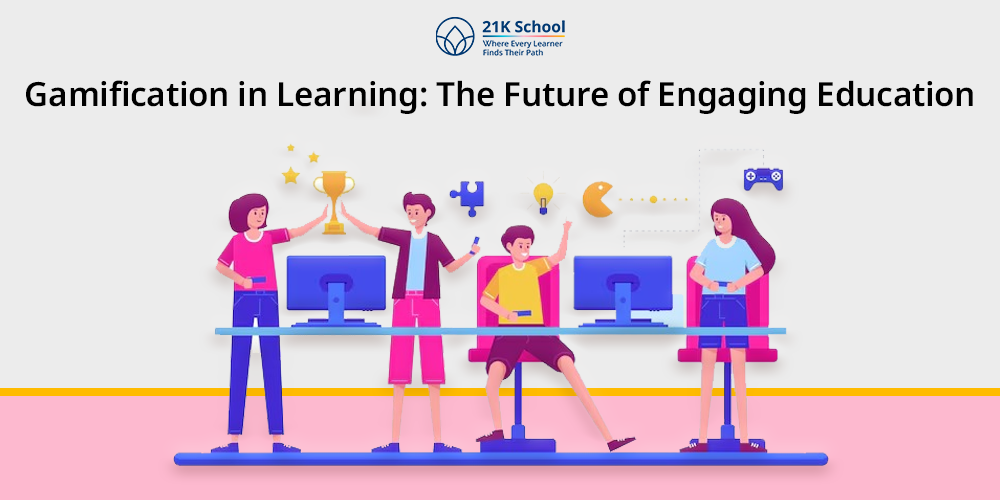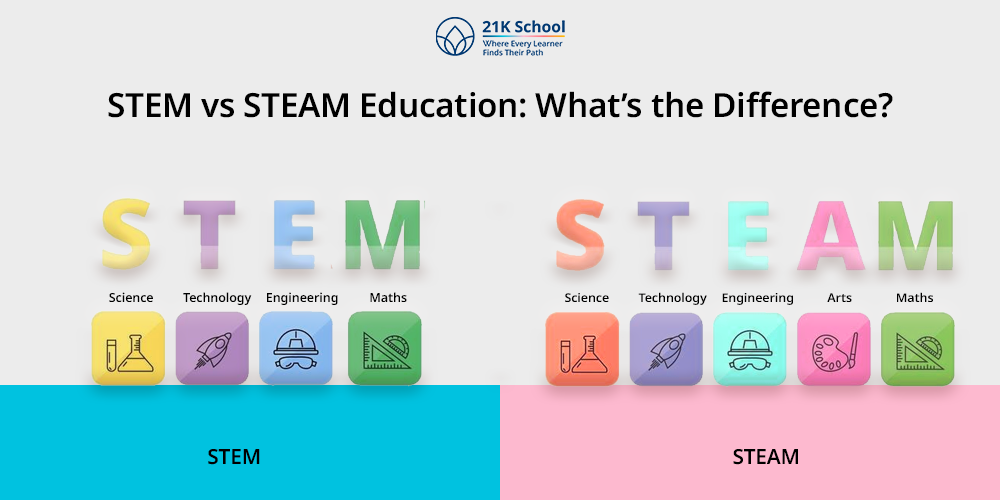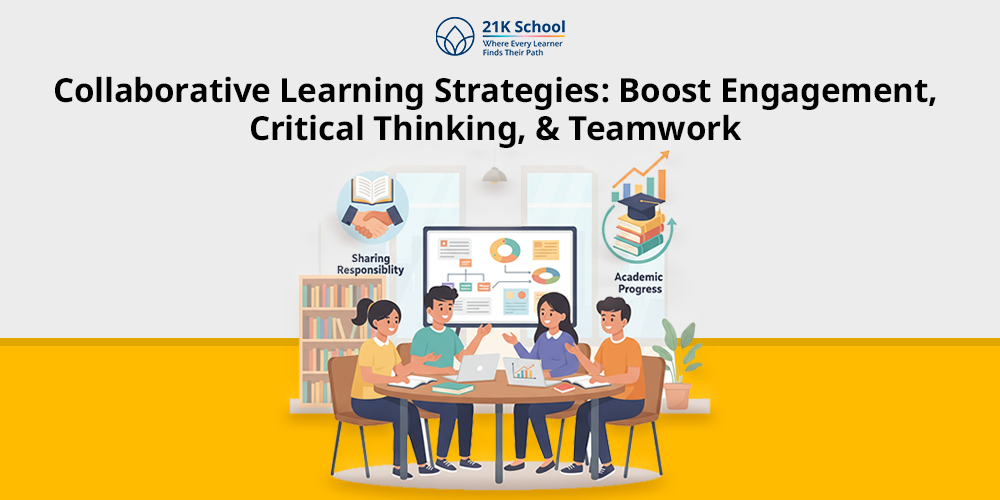
Let’s be real for a sec. Nobody likes mugging up books or sitting in boring lectures. The struggle is real—memorising formulas, going through 20-page notes, or cramming before exams is painful indeed.
But somehow, imagine if studying felt like playing? Not exactly a boxing game in your classroom (though that’d be wild), but close enough. That’s where this whole “gamification” thing enters.
Gamification can be referred as simply adding game-like elements may it be points, rewards, badges, or level to something that’s not a game. In our case, studies.
Read on to dive deeper into what is gamification in learning about in this writeup.
Contents
- What is Gamification in Learning?
- Key Characteristics Of Gamification In Learning
- What Is Gamification In Online Learning?
- Types Of Gamification In Education
- Why Gamification is Important in E-Learning?
- Gamification in Learning Examples
- Gamification Vs Game-Based Learning
- Benefits Of Gamification In Learning
- Implementing Gamification in Learning
- Conclusion
What is Gamification in Learning?
It is a process of introducing game-like elements to the learning process. It is making learning more fun, interesting & engaging among the students.
It is not about changing lessons into video games; rather, it uses gaming elements such as points, badges, rewards, coupons, and certificates in order to promote students to increase their participation.
Key Characteristics Of Gamification In Learning
The key characteristics of gamification in learning are goal-oriented learning, progress tracking, and others like:
1. Goal-Oriented Learning
Students usually work with clear goals & targets in their mind.
2. Progress Tracking
Students can track their growth by reviewing the points or level while completing any questionnaire.
3. Immediate Feedback
If students receive instant feedback or reviews from their mentors, it will keep them informed about their progress.
4. Rewards & Appreciations
Appreciation enhances students’ confidence & encourages them with a positive learning environment , attitude & behaviour.
So, gamification in education is turning ordinary lectures into interactive and flexible learning by adding different gaming elements.
What Is Gamification In Online Learning?
Gamification in online learning is converting the traditional classroom into digital platforms.
In the online learning environment, elements such as levels, quizzes, participation certificates, rewards, and badges are being introduced to draw the interest & focus of students towards learning.
This is keeping students’ minds engaged, motivated & helps the educators to track the students’ involvement properly.
The mixture of tech innovations & cognitive research is turning gamification into an important tool in order to improve focus, build confidence , and involvement of students.
Types Of Gamification In Education
There are two types of gamification that are being used in education :
1. Structural Gamification
It is a learning experience where game elements such as points, certificates, badges & levels are applied to educational frameworks by not changing any content.
Its main objective is to enhance students’ motivation, interest in learning & eagerness to learn new things.
2. Content Gamification
It refers to the involvement of gaming elements in non-game content. It encourages students engagement , motivation & deep understanding while learning.
Its main objective is to convert traditional learning to an interactive & engaging process for the students.
Why Gamification is Important in E-Learning?
Gamification is making online learning student-centric & interesting rapidly.
It is helping in balancing the gap between engagement & recognition by creating a sense of curiosity & eagerness towards learning.
It is important for the following reasons:
- Enhances the dedication & involvement of the students.
- Develops memory consolidation through the active interaction of students.
- Ensures self-study with clear reviews & feedback.
- Creates a sense of confidence & achievement by decreasing the mental exhaustion of students.
- Making learning more enjoyable & interesting for students of all age groups.
Gamification in Learning Examples
Now comes some of the real-life scenario examples that are showing how gamification has already reshaped learning:
1. Duolingo
Duolingo is using leaderboards, prizes, & success streaks in order to just make learning fun & interactive.
2. Classcraft
Classcraft is converting the classrooms into story-driven games in which students gain points for performing well as a team & with positive behaviour.
3. Kahoot!
Kahoot! is transforming quizzes into peer-to-peer competition between the students.
4. Online Courses or Academy
The different online courses promote students to complete the modules to gain a badge or certificate as a token of appreciation to stay motivated.
Gamification Vs Game-Based Learning
Gamification has some kind of similar features to game-based learning , but of course, they are not the same.
They have certain differences in between:
Gamification is a learning method, which is mostly adding the game-like elements(prizes, badges, certificates) into a non-game content in order to make learning language fun & engaging.
It helps students to get motivated by getting appreciations & also encourages participation among the students.
Game-based learning, it is a learning method, which uses games in order to make the students understand a particular topic in an engaging way.
It is an experience around game itself, it helps players to actively participate, solve problems, earn feedback.
Go through a quick comparison table on gamification vs. game-based learning:
| S No. | Aspects | Gamification | Game-Based Learning |
| 1. | Definition | Gamification includes applying game-like elements such as points, badges, leaderboards in non-game settings. | Game-based learning includes the use of actual games as a learning tool to teach or reinforce concepts. |
| 2. | Focus | The main focus is on motivation and engagement through rewards. | The main focus is on knowledge acquisition and skill development through gameplay. |
| 3. | Goal | Encourage participation and sustain interest. | Facilitate deeper understanding and application of concepts. |
| 4. | Integration | Added on top of existing lessons or activities. | Lesson content is embedded directly into the game. |
| 5. | Outcome | Gamification improves motivation and behavior. | Game-based learning improves education, problem-solving, and critical thinking skills. |
Benefits Of Gamification In Learning
The benefits of gamification in learning covers:
1. Improves Problem-Solving Ability
Gamification generally includes puzzles, quizzes, or real-life situations.
This helps the students to improve their critical thinking skills capability, problem-solving activities, & gain confidence among themselves.
2. Modifies Learning Experience
It is converting the boring lectures into interesting projects which is increasing the focus of students & participation among them.
Students will easily capture the concept of that particular topic where they are actively involved in the learning procedure.
3. Enhances Engagement
Gamification is adding points, levels, badges, certificates for the students to make them feel motivated by bringing strong participation among them.
This helps in creating a sense of excitement & eagerness to learn new things or lessons by the help of this teaching style.
4. Boosts Moral Support
By offering prizes, certificates, badges the students are feeling appreciated & which is creating a confidence for those who are academically weak.
Small appreciation helps students to enhance their self-confidence & boosts positive attitude.
5. Promotes Collaborative Learning
It generally improves team-based tasks, group discussions which helps in improving communication skills , teamwork as it is important in both education & professional platforms.
Implementing Gamification in Learning
The easy steps to implement gamification in learning are:
1. Personalisation
Gamification allows customised learning experience to every student.
It helps them to learn or capture knowledge at their own pace & speed keeping an eye on their interests & abilities and also by making learning fun & engaging.
2. Mobile Compatibility
It is making learning more accessible by using smart phones, mobile-friendly apps which is focusing on accessibility & frequent engagement for the students.
3. Data-Driven Insights
Analytics are playing an important role in the education system.
It helps in improving teaching styles for better results, helps mentors to track the progress & also helps in providing a proper insight about what to learn & what’s the progress.
4. Virtual Reality & Augmented Reality
VR & AR- based gamification is changing the learning environment completely which helps students to imagine the complicated lessons in whatever subject it be like.
5. Social Learning Integration
Gamification, includes levels, & discussion groups which is helping the students to encourage communication between their fellow mates in class while sharing various viewpoints by creating a proper environment.
Conclusion
Gamification is not just a common trend in today’s world.
It is a convertible learning method, which brings confidence, conceptual thinking & transformation together.
By adding gaming elements to lessons, mentors are converting the lessons in a more interesting & unique style of teaching so that the students can understand the complex concepts even more easily .
It is also making the classroom environment interactive & fun due to active participation of the students.



